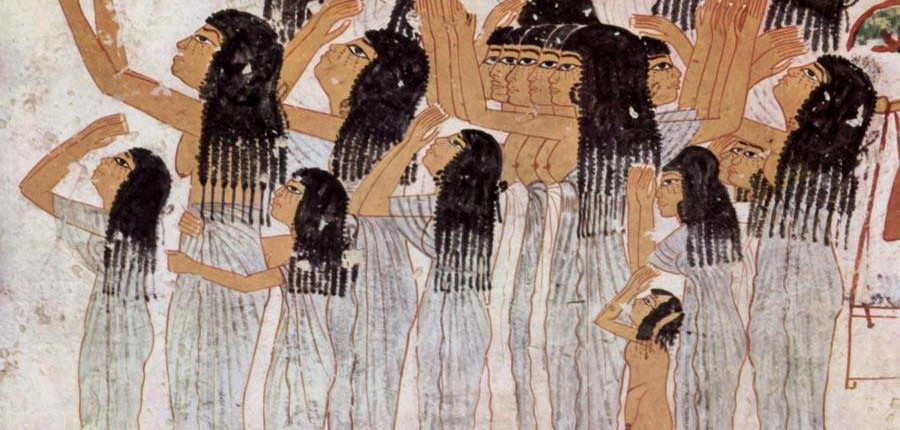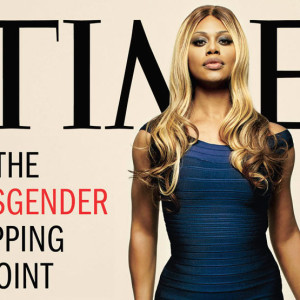Are you ready to descend, enter, follow and be marked by these lyrics that make up the long-poem sequence of Robin Coste Lewis’ debut poetry collection, just published from Knopf, a sequence which also grants her book its gorgeous (and ghostly) title: Voyage of the Sable Venus. Lewis describes the project in her Prologue below as a “narrative poem” but one could also call it a feminist/queer epic, a conceptual tour de force, a revolutionary re-naming, hallucinated index, resurrected archive. And still, this grand poem is also a reckoning that goes back to what poetry, art and race have in violent commonality: the power of naming. What does it mean in 2015 to scour a seemingly infinite network of references to the black body throughout Western art history and from those searches forge a poem? Lewis is a lyric poet yet how unlike Wallace Stevens’ The Paltry Nude Starts on a Spring Voyage whose “irretrievable way” reads as insular symbol of the imagination. Lewis is a conceptual poet yet how unlike the sensationalized recent white projects that blithely replicate trauma of/against POC bodies. Here, her work does not subsume nor raze its source material, nor does it sever it from history (which would be twice over as these works first existed within the polite vocabularies of the institutional art complex). Nor does this work pretend it is possible to reattach these titles, these whittled phrases back to some originary, healed or healing, “pure” source. Yes, they are like ruins but how eerie to remember they are far from ancient ones.
Lewis’ words mark all these rococo mental voyages, but the title also invariably harkens to a very literal, historical one: the Middle Passage. That is, the advent of the slave trade and the murderous claiming of African souls as less-than-human, as cargo, as labor. The poet cannot and does not intend to take this Roll Call of Black Objectification backwards. She can’t reassemble these figures to their rightful representations, nor trace what total histories have been lost to us (as is the case with almost every work of art). So where can the poem go? I believe this modern epic posits a radical black future built in the present/presence of Art no longer sealed off from, no longer repressing, no longer separate from History. Rather, these entries and catalogue descriptions of “objects” become (almost) (as if) animate again, at least imaginatively. Now as a chorus of women in tableau. Now as a context where the black figure is central, not adjacent. Now where, sublimely, blackness finds “relief.” What a thing is language. Relief: literally raising materials from their sculptural background to create tapestries of movement and body and dimension. But also relief: a sigh or release of burden from the trapped, forgotten, brutalized world of historical (and art-historical), geo-political objecthood. What she has done is not about burning down the old, nor constructing up a new, museum. These figures’ most miraculous voyage, perhaps, is their exit from capital toward life. Boundless, imaginative life that is the life of poetry. A poetry seared with its—and therefore our—history.
—Adam Fitzgerald, Poetry Editor
VOYAGE OF THE SABLE VENUS
And never to forget beauty,
however strange or difficult
REGINALD SHEPHERD
Prologue:
What follows is a narrative poem comprised solely and entirely of the titles, catalogue entries, or exhibit descriptions of Western art objects in which a black female figure is present, dating from 38,000 BCE to the present.
The formal rules I set for myself were simple:
1) No title could be broken or changed in any way. While the grammar is completely modified–I erased all periods, commas, semi-colons–each title was left as published, and was not syntactically annotated, edited, or fragmented.
2) “Art” included paintings, sculpture, installations, photography, lithographs, engraving, any work on paper, etc–all those traditional mediums now recognized by the Western art-historical project. However, because black female figures were also used in ways I could never have anticipated, I was forced to expand that definition to include other material and visual objects, such as combs, spoons, buckles, pans, knives, table legs.
3) At some point, I realized that museums and libraries (in what I imagine must have been a hard-won gesture of goodwill, or in order not to appear irrelevant) had removed many 19th century historically-specific markers, such as slave, colored, or Negro from their titles or archives, and replaced these words instead with the sanitized, but perhaps equally vapid African-American. In order to replace this historical erasure of slavery (however well-intended), I re-erased the post-modern “African-American” and changed all those titles back. That is, I re-corrected the corrected horror to allow that original horror to stand. My intent was to explore and record not only the history of human thought, but also how normative and complicit artists, art institutions and art historians have all been in participating in–if not creating–this history.
4) As an homage, I decided to include titles of art by black women artists and curators, whether the art included a black female figure or not. Most of this work was created over the last century, with its deepest saturation occurring since the Cold War. I also included work by black queer artists, regardless of gender, because this body of work has made consistently some of the richest, most elegant, least pretentious contributions to Western art interrogations of gender and race.
5) In a few instances, it was more fruitful to include a museum’s description of the art, rather than the title itself. This was especially true for colonial period.
6) Sometimes I chose to include female figures I believed the Western art world simply had not realized was a black woman passing for white.
7) Finally, no title was repeated.
“The Metropolitan Museum of Art
Employees’ Association Minstrel Show and Dance
will be held at the American Woman’s Association
361 West 57th Street, Saturday evening,
October 17, 1936”
“I am anxious to buy a small healthy negro girl–
ten or twelve years old, and would like to know
if you can let me have one…”
MRS. B. L. BLANKENSHIP
The Ship’s Inventory
Four-Breasted Vessel.
Three Women in Front
of a Steamy Pit, Two-Faced
Head Fish Trying on Earrings, Unidentified.
Young Woman with Shawl
and Painted Backdrop, Pearl of the Forest.
Two Girls with Braids People on a Ship
with Some Dancing Girls, Our Lady of Mercy, Blue.
Nude Iconologia Girl
with Red Flower Sisters
of the Boa Woman
Flying a Butterfly.
Kite Empty
Chair Pocket
Book Girl
in Red Dress with Cats
and Dogs. Devil House Door
of No Return. Head of a Girl
In the Bedroom,
In the Kitchen.
Contemplation Dark
Girl, Girl
In the Window Negress
with Flower Sleeping Woman
Negress with Flower Head
of a Woman Nude in a Landscape.
Libyan Sybil: Coloured
Nude, High Yellow. Negro
Woman and Two Children,
The Flight of the Octoroon:
The Four Quarters
of the World Holding
a Celestial
Sphere
Catalog 1: Ancient Greece & Ancient Rome
Here is your name
said the woman
and vanished in the corridor
MAHMOUD DARWISH
I.
Statuette of a Woman Reduced
to the Shape of a Flat Paddle
Statuette of a Black Slave Girl
Right Half of Body and Head Missing
Head of a Young Black Woman Fragment
from a Statuette of a Black Dancing Girl
Reserve Head of an African Princess
Statuette of a Concubine
Full Length Figure of a Standing
Black Woman Wearing Earrings
Statuette Once Supported an Unguent Vase
Vase with Neck in the Form of a Head
of a Black Statuette of a Female
Figure With Negroid Features
Figure’s Left Arm
Missing Head
of a Female Full-length Figure
of a Nubian Woman the Arms Missing
Bust of a Draped Female Facing Forward
One Breast Exposed Black
Adolescent Female with Long Curls and Bare
Breasts Wearing a Voluminous Crown
Partially Broken Young Black Girl
Presenting a Stemmed Bowl
Supported
by a Monkey
Element of Furniture Decoration
[Two Nubian Prisoners Bound
to a Post] Protome [Probably
the Handle of a Whip
or Other Implement]
Oil Flask Back
View Head of an African Prisoner
Statue of Prisoner Kneeling
Arms Bound at the Elbows
Left Arm Missing Bust
of a Nubian Prisoner with Fragmentary Arms
Bound Behind Funerary Mask
of a Negro with Inlaid Glass Eyes
and Traces of Incrustations
Present in the Mouth
Censer in the Form
of a Nude Negro Dwarf
Standing with His Hands
at His Sides upon an Ornate Tripod
and Supporting on His Head
a Small Cup
in the Shape
of a Lotus
Flower
Standing Female Reliquary Figure
with Crested Coiffure and Hands
Clasped in Front of Torso, Holding
a Staff Surmounted by a Human Head
Figure Has Prominent
Vagina Bended
Knees and Oversized Head
with Half-Open Eyes
and Semicircle Mouth
that Juts Out
from the Face Some
Fine Scarification
on Chest and Belly
Dark Brown Almost Black
Patina with Oil Oozing
in Several Places
Numerous Cracks
on Back of Head and Hole
on the Coiffure
One Nipple Appears
to Be Shaved Off
or Damaged Black Woman
Standing on Tiptoe
on One End of a Seesaw
while a Caricatured Figure Jumps
on the Other
End
III. The Great Hunt: Torment of the Damned
Heraldic Lion Holding
Between His Paws the Head
of a Kneeling Black Captive
Statuette of a Negro Captive Kneeling
Hands Bound Behind Back
Negro Youth Struggling
with a Crocodile
Negro Youth Struggling
with a Crocodile Negro Youth
Struggling with A Crocodile
Pygmy Armed With a Stick Statuette
of a Black Girl with Her Head
Inclined Toward the Left
Shoulder Dagger with Decoration
In Relief Lion Devouring a Black Head
of a Black Nude Black Serving Girl
Carrying an Ointment
Chest on Her Head
Ointment Spoon in the Form
of a Swimming Nubian Girl
Swimmer Holds Before Her
A Duck Fragment
that Once Formed the Spoon
[Black Swimmers Symbolizing the Dawn]
Young Black Female Carrying
a Perfume Vase with a Necklace
with Pendant Figure of the God Bes
Drawn in Black Ink Around Her
Neck Plaited Lock
of Hair on Left Side of Her Head Relief
[The Queen of Meroe Spearing
Captives] Handle or Pommel
in the Form of Three Conjoined Heads
Including a Black Woman Perhaps
Black in the Clutches of a Lion
Black Prisoners Followed
by Women and Children Statuette
Figure of a Young Black Girl Holding
a Perfume Vase in Front of Her Statuette
of Young Nubian Girl Carrying an Ointment Vase
Wearing a Necklace
of the God Bes
God of Joy
and of the Dance
IV.
Standing
Female Figure
With Child Kneeling
Female Figure
With Child Standing
Female Figure
Head Rest Supported
By Seated Female Figure Kneeling
Female Figure with Bowl Standing
Female Figure Kneeling
Female Figure with Bowl
And Child Standing
Female Figure Seated
Female Figure (Pipe)
Female Figure Standing
Female Figure Undated
Female Figure Mask Female Mask
Female Rhythm Pounder
Standing
V.
Attendants bringing
offerings to the burial
Funerary relief
Detail of relief
Grave relief
Site relief
Relief fragment
from the tomb
Vase with painted
decoration relief
Carved relief
Phiale Decorated [in relief]
with three rows of Negro heads
and a row of acorns
Isis Receiving
the Sacrifice
Relief
Relief
Relief
Relief


